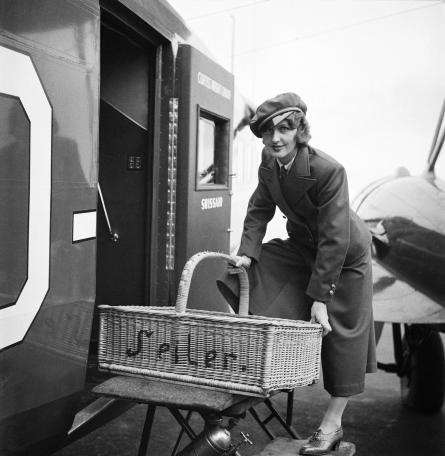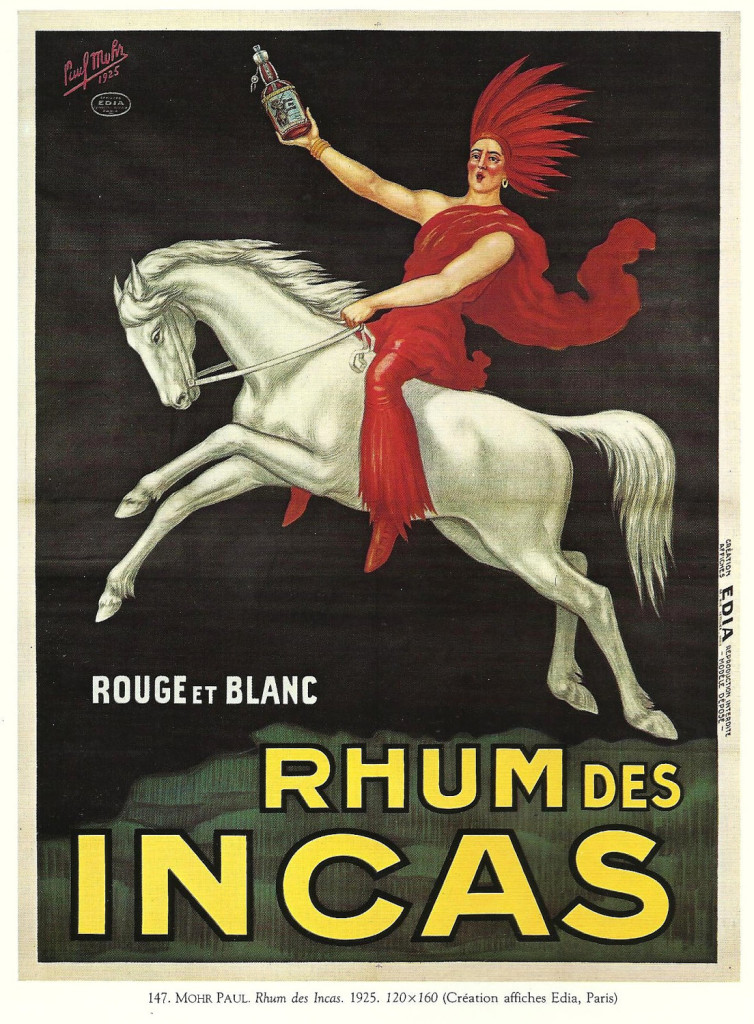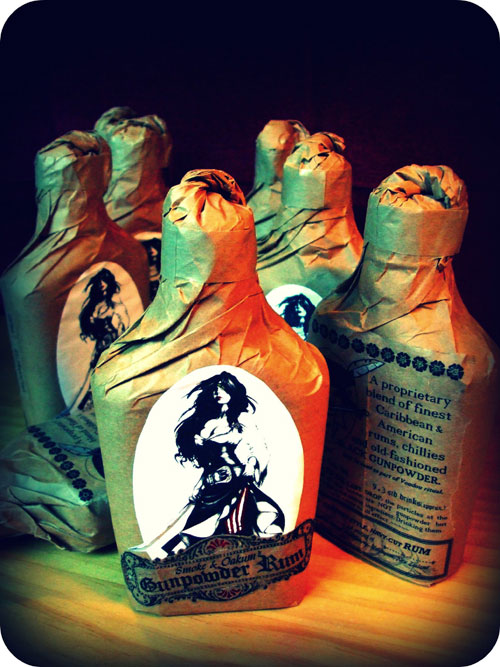My book received another positive review, this time from Juliette Rossant, who wrote the book “Super Chef” and has a blog by that name. You can read it at this link. In her honor, this post will be about chefs who claimed the most coveted of superpowers: flight.
Airline competition across the Atlantic heated up after the Second World War, as state-owned airlines competed with private carriers for an expanding market of tourists and business travelers. Since almost all carriers were flying the same aircraft in substantially the same configuration, none could claim greater speed or comfort, so competition in food service became intense. One of the most effective ads was a series by KLM, which touted their “Flying Chef”: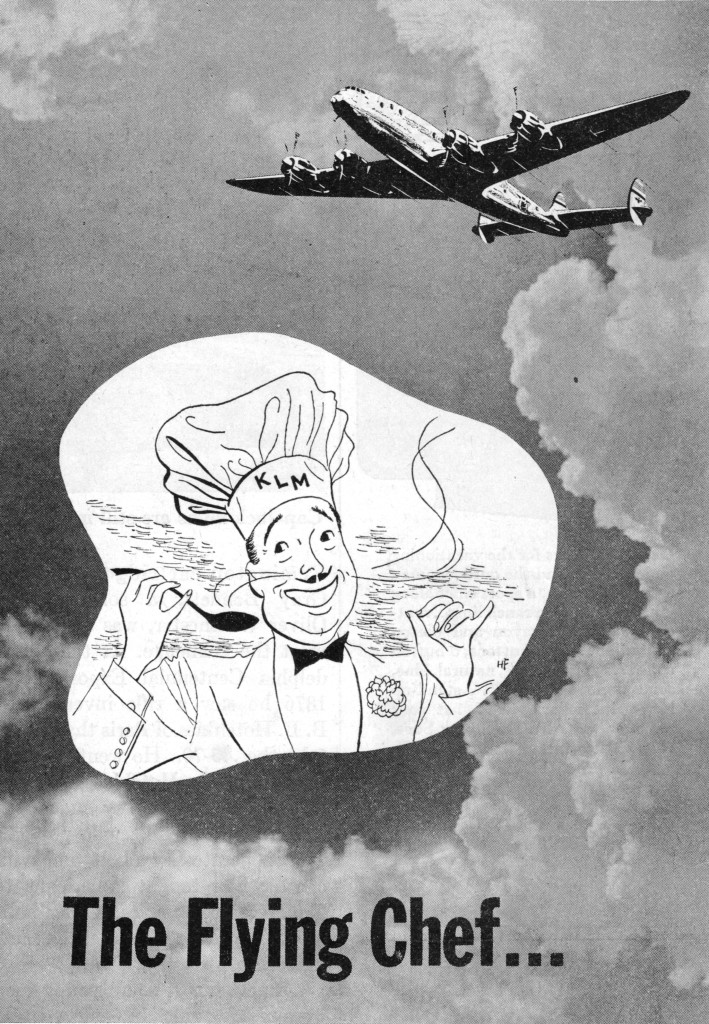 A 1947 ad boasted, “KLM’s Flying Chef performs culinary miracles in his kitchen in the clouds…creating delectable hors d’ouerves and desserts, savory sauces and salads, twenty thousand feet in the sky. He is indeed the world’s top chef!”
A 1947 ad boasted, “KLM’s Flying Chef performs culinary miracles in his kitchen in the clouds…creating delectable hors d’ouerves and desserts, savory sauces and salads, twenty thousand feet in the sky. He is indeed the world’s top chef!”
You might note that though starters, sauces, and desserts were mentioned, main courses weren’t. This was a coy admission that the era of frozen food was blossoming, and the entrees were cooked on the ground and reheated. The Lockheed Constellation shown in the background of that picture had little room to cook – here’s the galley aboard one of the few remaining aircraft of this type, which is in the Museum of Flying in Seattle:

Photo commissioned from Museum of Flying, used by permission.
There may have been a cabin crew member who had a very limited ability to make a sauce from scratch, but anyone doing that job was mainly a garde manger, making beautiful arrangements of cold food. KLM continued to use the advertising tagline of the Flying Chef late into the 1950’s, but hasn’t deployed it lately. Someone else has – look at this contemporary ad from Turkish Airlines: 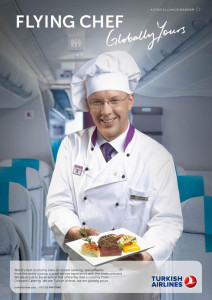 We’d all like to fantasize that a dedicated professional chef is making the meals we eat aboard aircraft, even as we know that almost everything is made in industrial kitchens hundreds, perhaps thousands of miles from where it is consumed. There are few exceptions, the private corporate jets and government aircraft, but unless you’re aboard Air Force One your chef probably has no greater powers of flight than the rest of us mere mortals.
We’d all like to fantasize that a dedicated professional chef is making the meals we eat aboard aircraft, even as we know that almost everything is made in industrial kitchens hundreds, perhaps thousands of miles from where it is consumed. There are few exceptions, the private corporate jets and government aircraft, but unless you’re aboard Air Force One your chef probably has no greater powers of flight than the rest of us mere mortals.
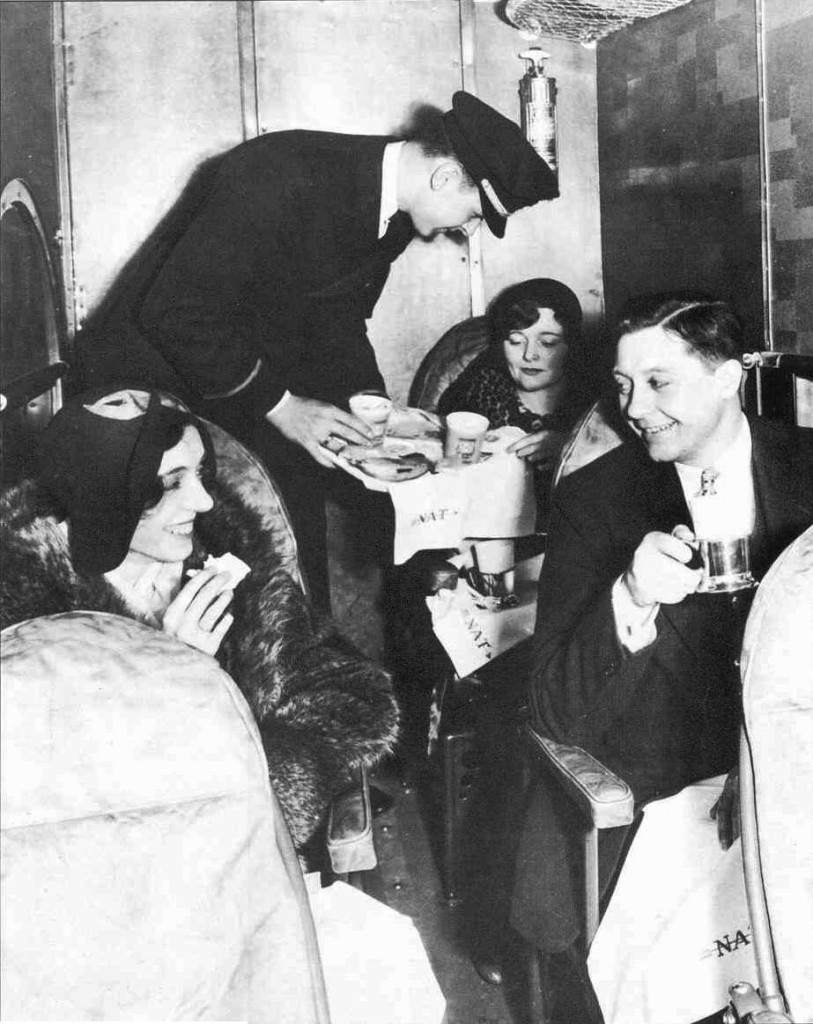 Behind that rather interesting looking couple is the co-pilot, taking a break from his other duties to hand out drinks and sandwiches. Note the very high ceilings and curved windows – this is what the aircraft looked like from the outside:
Behind that rather interesting looking couple is the co-pilot, taking a break from his other duties to hand out drinks and sandwiches. Note the very high ceilings and curved windows – this is what the aircraft looked like from the outside:





